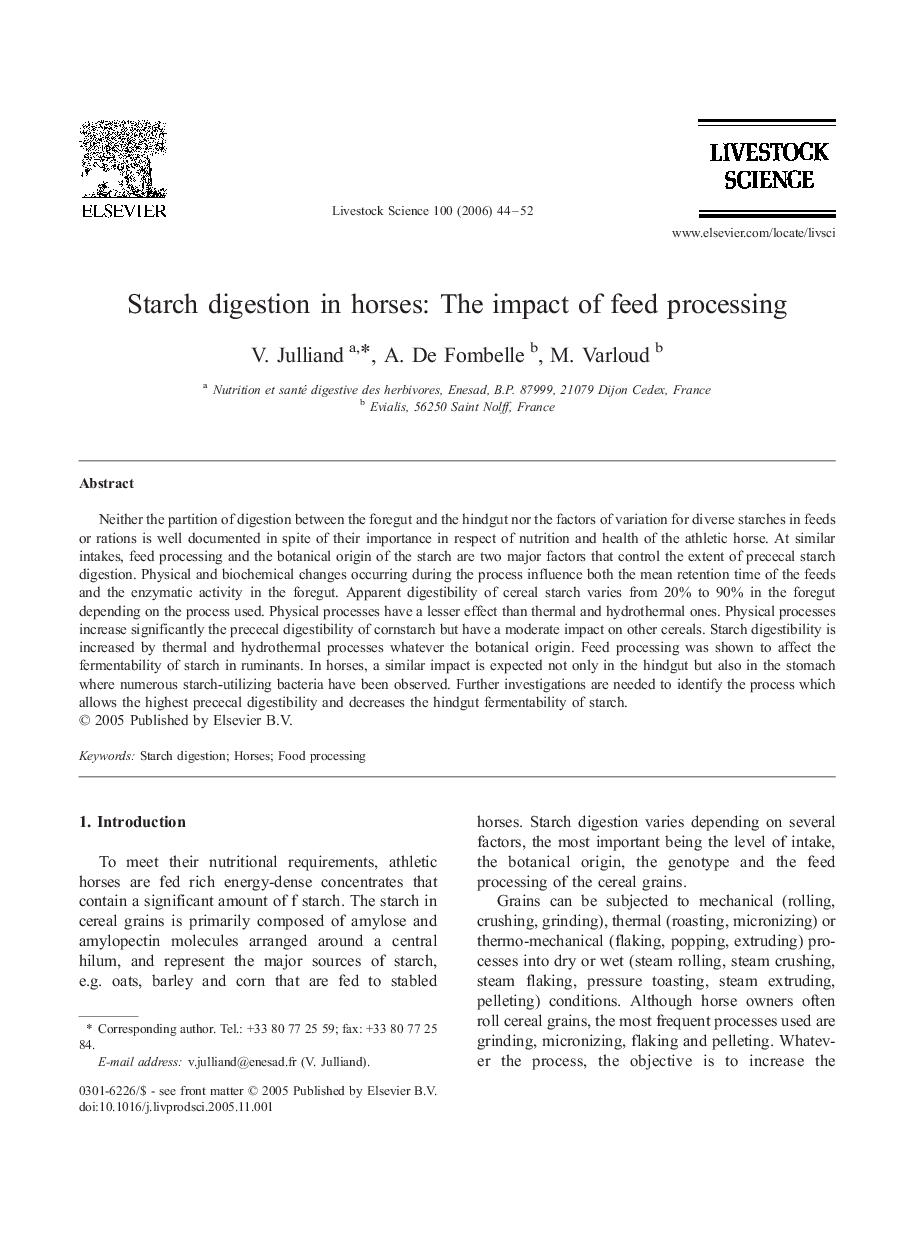| Article ID | Journal | Published Year | Pages | File Type |
|---|---|---|---|---|
| 2449267 | Livestock Science | 2006 | 9 Pages |
Neither the partition of digestion between the foregut and the hindgut nor the factors of variation for diverse starches in feeds or rations is well documented in spite of their importance in respect of nutrition and health of the athletic horse. At similar intakes, feed processing and the botanical origin of the starch are two major factors that control the extent of prececal starch digestion. Physical and biochemical changes occurring during the process influence both the mean retention time of the feeds and the enzymatic activity in the foregut. Apparent digestibility of cereal starch varies from 20% to 90% in the foregut depending on the process used. Physical processes have a lesser effect than thermal and hydrothermal ones. Physical processes increase significantly the prececal digestibility of cornstarch but have a moderate impact on other cereals. Starch digestibility is increased by thermal and hydrothermal processes whatever the botanical origin. Feed processing was shown to affect the fermentability of starch in ruminants. In horses, a similar impact is expected not only in the hindgut but also in the stomach where numerous starch-utilizing bacteria have been observed. Further investigations are needed to identify the process which allows the highest prececal digestibility and decreases the hindgut fermentability of starch.
